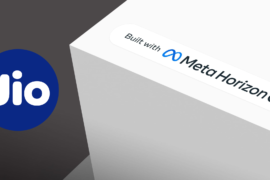John Carmack just gave his take on Meta’s new strategy of providing its headset OS to third-party hardware companies.
If you somehow missed the news yesterday, Horizon OS is the new name for the Quest system software, which Meta will also make available to third-party headset makers, starting with ASUS, Lenovo, and potentially LG too.
But former Oculus CTO John Carmack, who architected much of the Oculus Mobile system software that eventually became the Quest system software, and soon Horizon OS, doesn’t seem to think this is such a great idea for Meta.

Carmack points out that third-parties will have to price higher than Quest, since Meta sells its hardware at cost. Carmack has repeatedly called for lower cost headsets that open up the VR market to more people. While he says Meta’s strategy will enable “boutique” headsets that push areas like resolution, field of view, or comfort, he suggests this “brings with it a tension” that Meta will no longer have the “shine of making industry leading high-end gear”, which he suggests will force Meta to focus on “novel new hardware systems from the research pipeline for their high end systems, which is going to lead to poor decisions”.
“VR is held back more by software than hardware”
But Carmack’s biggest criticism of the idea is from a software perspective. He claims the strategy will be “a drag on software development at Meta”, because the engineering resources needed to make the OS suitable for third-parties and “maintaining good communication and trying not to break your partners” will “steal the focus” of Meta’s key software engineers that would be “better spent improving the system”. This is vital, in his words, because “VR is held back more by software than hardware”.
Carmack finished his statement by suggesting “allowing partner access to the full OS build for standard Quest hardware” instead, which he claims could be done very cheaply and enable specialty applications and location-based entertainment, though he acknowledges it would be “a much lower key announcement”.
Here’s Carmack’s full statement from X:
“Meta already sells the Quest systems basically at production cost, and just ignores the development costs, so don’t expect this to result in cheaper VR headsets from other companies with Quest equivalent capabilities. Even if the other companies have greater efficiency, they can’t compete with that.
What it CAN do is enable a variety of high end “boutique” headsets, as you get with Varjo / Pimax / Bigscreen on SteamVR. Push on resolution, push on field of view, push on comfort. You could drive the Apple displays from Quest silicon. You could make a headset for people with extremely wide or narrow IPD or unusual head / face shapes. You could add crazy cooling systems and overclock everything. All with full app compatibility, but at higher price points. That would be great!
This brings with it a tension, because Meta as a company, as well as the individual engineers, want the shine of making industry leading high-end gear. If Meta cedes those “simple scaling” axes to other headset developers, they will be left leaning in with novel new hardware systems from the research pipeline for their high end systems, which is going to lead to poor decisions.
VR is held back more by software than hardware. This initiative will be a drag on software development at Meta. Unquestionably. Preparing the entire system for sharing, then maintaining good communication and trying not to break your partners will steal the focus of key developers that would be better spent improving the system. It is tempting to think this is just a matter of increasing the budget, but that is not the way it works in practice – sharing the system with partners is not a cost that can be cleanly factored out.
Just allowing partner access to the full OS build for standard Quest hardware could be done very cheaply, and would open up a lot of specialty applications and location based entertainment systems, but that would be a much lower key announcement.”






